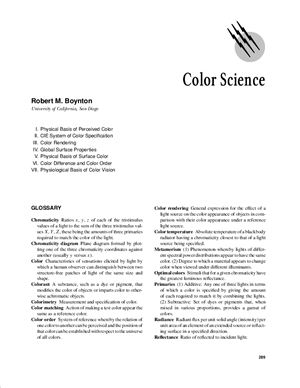3rd Edition - 14800 pages.
Elsevier, 2001. - 367 p.
Nine years has passed since the 1992 second edition of the encyclopedia was published. This completely revised third edition, which is a university and professional level compendium of chemistry, molecular biology, mathematics, and engineering, is refreshed with numerous articles about current research in these fields. For example, the new edition has an increased emphasis on information processing and biotechnology, reflecting the rapid growth of these areas. The continuing Editor-in-Chief, Robert Meyers, and the Board prepared a new topical outline of physical science and technology to define complete coverage. Section editors are either Nobel Laureates or editors of key jouals in their fields. Additional Board members representing the global scientific community were also recruited.
The new 18-volume edition of the Encyclopedia of Physical Science and Technology, 3Ed., will have the added feature of an Index Volume, containing abstracts of all of the articles in the encyclopedia.
The latest edition of the Encyclopedia of Physical Science and Technology:
Has been completely updated with no less than 90% revised material and 50% new content throughout the volumes
Presents eighteen volumes, nearly 800 authoritative articles and 14,500 pages
Is lavishly illustrated with over 7,000 photographs, illustrations and tables
Presents an increased emphasis on the hottest topics such as information processing, environmental science, biotechnology and biomedicine
Includes a final Index Volume containing Thematic, Relational and Subject indexes
Color Science
Critical Data in Physics and Chemistry Cryogenics
Electrical and Electronic Measurements
Flow Visualization
Geodesy
Geostatistics
Global Gravity Modeling
Microscopy
Optical Interferometry
Radiocarbon Dating
Radiometric Dating
Radionuclide Imaging Techniques, Clinical
Scanning Electron Microscopy
Speckle Interferometry
Stable Isotopes as Tracers of Global Cycles
Statistical Mechanics
Steam Tables
Thermoluminescence Dating
Physical Mechanism
Age Evaluation
Sample Types and Age Ranges
Time and Frequency
Ultrasonics and Acoustics
Vacuum Arcs
Elsevier, 2001. - 367 p.
Nine years has passed since the 1992 second edition of the encyclopedia was published. This completely revised third edition, which is a university and professional level compendium of chemistry, molecular biology, mathematics, and engineering, is refreshed with numerous articles about current research in these fields. For example, the new edition has an increased emphasis on information processing and biotechnology, reflecting the rapid growth of these areas. The continuing Editor-in-Chief, Robert Meyers, and the Board prepared a new topical outline of physical science and technology to define complete coverage. Section editors are either Nobel Laureates or editors of key jouals in their fields. Additional Board members representing the global scientific community were also recruited.
The new 18-volume edition of the Encyclopedia of Physical Science and Technology, 3Ed., will have the added feature of an Index Volume, containing abstracts of all of the articles in the encyclopedia.
The latest edition of the Encyclopedia of Physical Science and Technology:
Has been completely updated with no less than 90% revised material and 50% new content throughout the volumes
Presents eighteen volumes, nearly 800 authoritative articles and 14,500 pages
Is lavishly illustrated with over 7,000 photographs, illustrations and tables
Presents an increased emphasis on the hottest topics such as information processing, environmental science, biotechnology and biomedicine
Includes a final Index Volume containing Thematic, Relational and Subject indexes
Color Science
Critical Data in Physics and Chemistry Cryogenics
Electrical and Electronic Measurements
Flow Visualization
Geodesy
Geostatistics
Global Gravity Modeling
Microscopy
Optical Interferometry
Radiocarbon Dating
Radiometric Dating
Radionuclide Imaging Techniques, Clinical
Scanning Electron Microscopy
Speckle Interferometry
Stable Isotopes as Tracers of Global Cycles
Statistical Mechanics
Steam Tables
Thermoluminescence Dating
Physical Mechanism
Age Evaluation
Sample Types and Age Ranges
Time and Frequency
Ultrasonics and Acoustics
Vacuum Arcs

